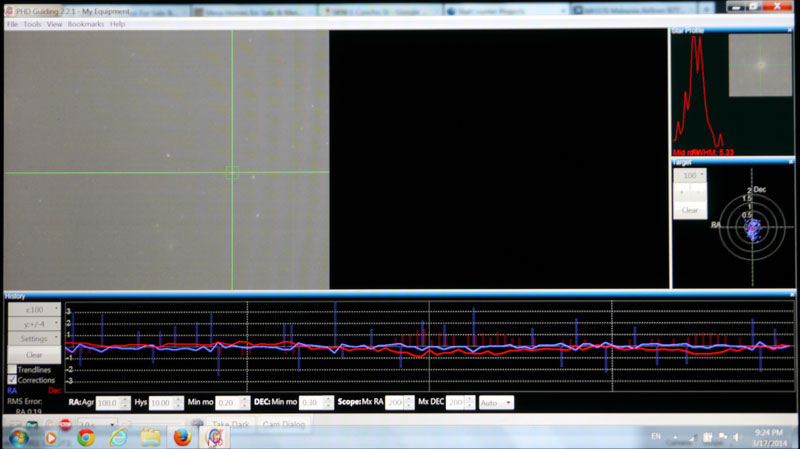I have the autoguider working. I had to disassemble my mount and retune the DEC axis to smooth it out and remove “backlash” in the gears, but that was not a big deal. The big challenge I’m facing now is the fact that my camera is limited to taking 4:16 minute exposures, even in so-called “bulb” mode. That’s probably okay because from my light-polluted suburban backyard, taking long exposures is pointless if there’s any hint of a moon.
Below is the guide pulse output for my rig. The flatter the plots the better the results, though the flatness depends on a number of factors including quality of initial alignment and the smoothness of the mount. And, of course, the clarity of the skies! If a cloud comes by and blocks out the “guide” star, well, the whole thing gets kinda lost. If it’s only for a moment, and your mount is tracking well, then you likely can recover. But if you just kinda threw things together without taking the time to do the proper setup, then all bets are off. You might get lucky, but chances are you’ll actually get screwed. Of course there are times when you do everything right and things still get screwed, but that’s just the way things are; in astronomy, in writing.
In life.

PHD (Push Here Dummy) Guiding
About Author Richard P. Nixon
Fled Libya in wake of '67 Six Day War. "Uncle Mo" eventually seized power - two years later on my birthday. Grew up mostly American, with some "old world" quirks. Have been writing since around 1994, but didn't really start writing until 2008. Between 1976 and 1983 spent my time between boarding school (Ireland, Northern Ireland and England) and Alaska (until 1978) and then Saudi Arabia. Came back to the States in '83 and have been in Arizona since '95. Have a nice day. ;)
